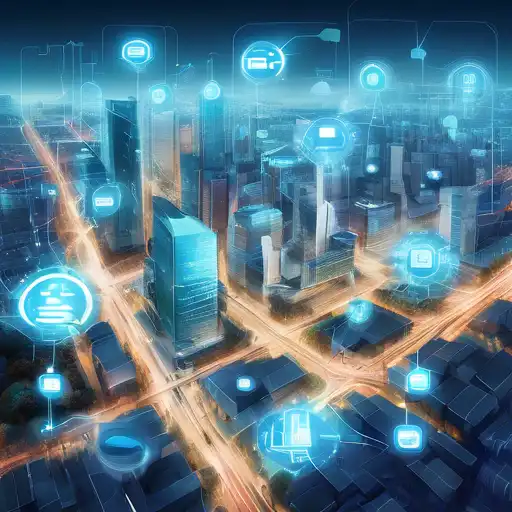Introduction to IoT in Smart Cities
The Internet of Things (IoT) is revolutionizing the way cities operate, making them smarter, more efficient, and more responsive to the needs of their inhabitants. By integrating IoT devices and technologies, urban areas are transforming into smart cities, where data and connectivity improve the quality of life for everyone.
Key Components of IoT in Smart Cities
Smart cities rely on several key components of IoT to function effectively. These include:
- Sensors and Devices: These collect data from the environment, such as air quality, traffic flow, and energy usage.
- Connectivity: High-speed internet and wireless networks enable devices to communicate and share data in real-time.
- Data Analytics: Advanced algorithms analyze the collected data to identify patterns, predict trends, and make informed decisions.
- User Interfaces: Apps and dashboards allow citizens and city officials to interact with the IoT ecosystem, accessing information and services.
Benefits of IoT in Smart Cities
The integration of IoT in urban areas offers numerous benefits, including:
- Improved Traffic Management: IoT devices can monitor traffic conditions in real-time, reducing congestion and improving commute times.
- Enhanced Public Safety: Smart surveillance and emergency response systems can detect and respond to incidents more quickly.
- Energy Efficiency: Smart grids and meters optimize energy use, reducing waste and lowering costs.
- Environmental Monitoring: Sensors track pollution levels, helping cities to address environmental challenges proactively.
Challenges and Considerations
Despite its advantages, the implementation of IoT in smart cities faces several challenges:
- Privacy and Security: The vast amount of data collected raises concerns about privacy and the potential for cyberattacks.
- Infrastructure Costs: Developing the necessary infrastructure requires significant investment.
- Interoperability: Ensuring that different devices and systems can work together seamlessly is crucial.
Future Prospects
The future of IoT in smart cities is bright, with ongoing advancements in technology paving the way for even more innovative applications. From autonomous vehicles to AI-driven urban planning, the possibilities are endless.
For more insights into how technology is shaping urban environments, check out our article on Digital Transformation in Urban Planning.
Conclusion
The role of IoT in smart cities is undeniably transformative, offering solutions to some of the most pressing urban challenges. As technology continues to evolve, so too will the capabilities of smart cities, making them more livable, sustainable, and efficient for future generations.
